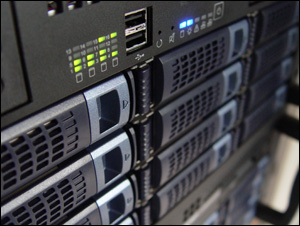 One of the main reasons any business considers housing their IT infrastructure in a colocation facility is for cost reduction. When making this type of decision, it is important for the organization to understand what options are available and the fees that are associated.
One of the main reasons any business considers housing their IT infrastructure in a colocation facility is for cost reduction. When making this type of decision, it is important for the organization to understand what options are available and the fees that are associated.
The first aspect to consider when moving to a colocation facility is the space that the server, or servers, will occupy in the facility. In a colocation situation, a company is basically renting space from a data center to house its servers, along with any additional hardware required to operate the IT infrastructure.
Along with space, broadband costs are also necessary. A quality connection from your corporate locations to your equipment is just as important, and also has an associated fee. There are several common terms to understand in this process. These terms include racks, cabinets, amps, and bandwidth, each of which is described in detail below:
1 – Racks
A rack is used to mount hardware. Colocation racks are fitted with mounting hardware spaced 19” apart, which allows easy installation of equipment.The overall height of the items in the rack can vary, but a rack mount has a uniform height of 1.75”. This is referred to as the “U”. The size of a standard server used for the industry is around 1U, while networking gear such as switches could be 2U, and drive arrays 4U or greater.
The number of U’s required to mount the hardware determines the colocation facility’s monthly base fee. When determining the costs of housing servers, a company must also consider space requirements for any additional equipment to fit in that space.
2 – Cabinets
A cabinet is the term used when referring to a full sized rack. In practice, this means a rack of about 47U. Cabinets are typically used by larger companies with multiple servers. Partial or half cabinets are also offered in most colocation facilities. Cabinets and partial cabinets provide a large amount of space, over and above what is required by most users with only a single server. This provides room for expansion within the colocation facility.
Many data centers offer an additional layer of security for larger companies in the form of a secure cage. This is typically more costly than migrating a single server into a dedicated rack server case as a cages houses at least three cabinets.
3 – Amps
As a precaution against power outages, most providers include redundant power systems in the design of the data center. In order for the facility to manage complete redundancy, they need to know the power usage of all equipment installed on site.
A colocation provider charges a certain number of amps to the corresponding amount of space rented in the facility. Commonly, this is around 1 to 2 amps per U. While this should provide ample capacity to serve most equipment, any additional allotment required will incur additional charges.
4 – Bandwidth
The term bandwidth is used to describe the amount in throughput your connection has to its equipment. Typically the type of connection you have will determine/describe the amount of bandwidth you have. For example, if you have a Metro Ethernet connection, you are connected to your racks or cages via a standard Ethernet connection that is commonly 100MB per second throughput.
The most common types of connections include T1 (1.544 MB per sec.), T3 (45 MB per sec.), Metro Ethernet (100 MB per sec.), and Fiber (100 MB to 1,600 MB per sec.). Obviously each of these options has a fee associated to it. Usually billed on a monthly basis, the T1 is the cheapest option working its way up to Fiber being the most expensive.
In order to ensure that you receive the right service for your organization, it is best to approach a colocation provider with a basic knowledge of these terms and how they apply to the company’s infrastructure. Most if not all data centers have dedicated staff that can then explain their facility’s operations in greater detail and assist you with selecting the best services.
About the author: Alvin Roggers lives to blog, and bloggers love to publish his content. Alvin’s publications have been picked up by CNN, LA Times, New York Times just to name a few. He loves to write about Data Centers, Colocation Facilities, and Green IT Solutions.
Photo credit: Whrelf Siemens